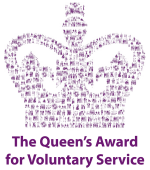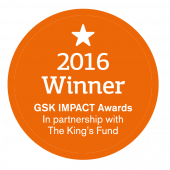Yesterday the Home Office released the latest official figures on drug use in England & Wales. For the first time in five years they have been analysed by sexual orientation, giving us a rare comparison at how use differs for lesbian, gay and bisexual people.
The headline figure in the Crime Survey for England & Wales is that drug use in the past year amongst gay and bisexual men is three times higher (33%) than use amongst heterosexual men (11.1%). For lesbian and bisexual women use is more than four times as high (22.9%) than for heterosexual women (5.1%).
Just as for heterosexuals, the most commonly used illicit drug amongst LGB people is cannabis, used by around 1 in 5 gay or bi men, and 1 in 6 lesbian or bi women. Compared with heterosexuals these rates are again much higher: more than twice as high for gay and bi men and a whopping four and a half times higher for lesbian and bi women.
The figures, in fact, show higher use across all drugs by LGB people; unsurprisingly the largest difference is in the use of amyl nitrite (poppers), the second most commonly used drug by gay and bi men, and 25 times more common than amongst straight men. We also see large differences in ‘club’ drugs such as ecstasy (almost five times higher in LGB people) and ketamine (seven and a half times more common). Even drugs thought to be less associated with the gay community like heroin and crack cocaine see higher levels of use, although just as for heterosexuals use of these is thankfully very low.
One of the more noticeable discrepancies is the use of methamphetamine, or crystal meth. Globally the drug has been cited by the United Nations as the number one problem substance and has caused devastation amongst users in many countries. In the UK use is still very low, although we see here that it’s almost all amongst gay and bi men. This mirrors what we see in our own treatment service Antidote where crystal has grown from no presentations a decade ago to being used by more than half (51.3%) of the drug-using clients we saw last year. In the Crime Survey use amongst heterosexuals is so low as to be rounded down to zero for men and women combined.
We still don’t have all of the data
The official statistics don’t give us the full picture. Use within the gay scene has long been viewed as being where trends can begin, and it can take a while for official data to catch up. We don’t get separate analysis for former ‘legal highs’ GHB/GBL or mephedrone, for example, although we know these have become significant issues for some LGB people. Last year 46% of Antidote clients seeking drug treatment was for GHB/GBL, and a massive 64% for mephedrone, a drug that was virtually unheard of until just five years ago.
Thankfully it’s not all a dismal picture. Comparing the data with the figures released in 2009 we do see a small drop in drug use overall amongst lesbian, gay and bisexual people, which mirrors the trend in wider society. The disproportion, however, remains; rates are still similarly high in our populations.
The reasons for this difference are widely discussed and probably stem from a mix of factors; our primary association by identity as LGB people is done in bars and clubs, and we can usually stay at play longer than our heterosexual counterparts with responsibility for childcare still less common. Certainly we normalise longer partying behaviour, and more recently drugs have crept increasingly into our bedrooms with chemsex noticeably on the rise amongst some gay and bi men. When drugs are used less for fun but to self-medicate we know all too well that the reasons – depression, anxiety, prejudice – are more prevalent in our populations too.
The availability of this data after a gap of some years highlights the importance of routine monitoring of sexual orientation to allow us to identify significant differences such as these. Whilst anecdotally we may feel there’s little new here – and to be frank, that’s true – don’t underestimate the importance of an official stat: the paucity of evidence available to analyse by sexual orientation (and it’s even worse surrounding trans identities) means that our needs are frequently overlooked, omitted from local health needs assessments, and subsequently not considered in the planning and provision of support services.
Raising awareness, improving treatment
We recently examined the impact of this for LGBT people seeking drug & alcohol treatment and make many recommendations for its improvement in our report Out Of Your Mind. It’s a useful tool for policy makers, commissioners, providers and front-line drug and alcohol workers seeking to improve their LGBT competence strategically and individually. Through our strategic partners in the National LGB & T Partnership we also supported the publication of an LGBT companion document to the Public Health Outcomes Framework, a resource which identifies LGBT health inequalities and available evidence and maps it to the national standards for measuring success. It’s essential reading for all local public health staff and anyone with an interest in improving LGBT health.
Drugs, along with alcohol and tobacco, will feature prominently in Public Health England’s forthcoming strategy to improve the health and wellbeing of gay, bisexual and other men who have sex with men. We’re already working with PHE to achieve some of the actions set out in a recent draft. It’s a great start, but needs to be extended to improve lesbian and bisexual women and trans people’s health too.
Our website has information on drugs and alcohol as well as tips to play more safely if you are using. Our Antidote service can help if your use is becoming more problematic, with support to cut down or stop altogether. We offer walk-in assessments from two weekly drop-ins and work in partnership with three sexual health clinics each week. Last year 90% of our service users stopped using or reduced to a level they were comfortable with. Antidote also provides training and other support to improve drug and alcohol treatment for LGBT people.
Monty




